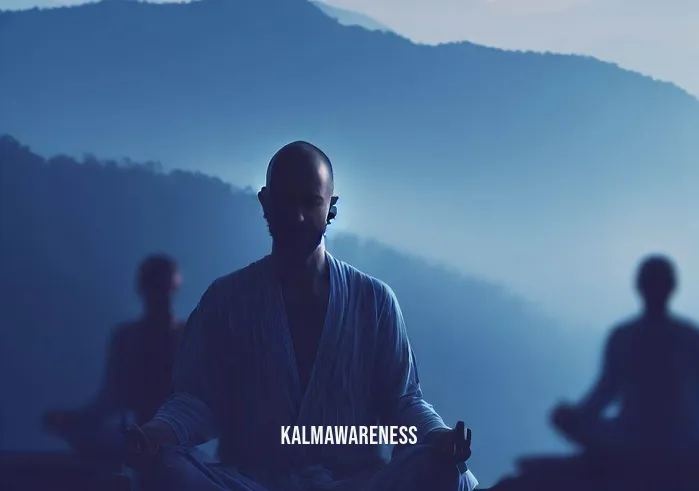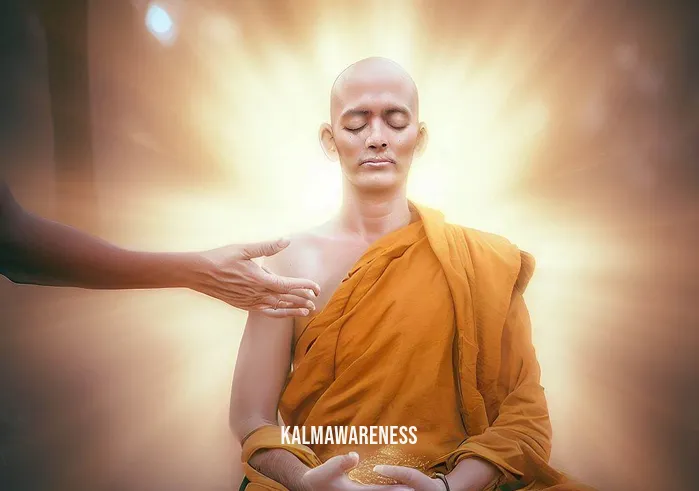The Profound Experience of Dhamma Sukha: A Pathway to Inner Peace and Spiritual Bliss
Introduction: The Concept of Dhamma Sukha
In our journey towards inner peace and spiritual well-being, the term “dhamma sukha” provides a particularly enlightening compass. Originating from Buddhist teachings, the term combines “Dhamma,” referring to the universal laws of nature, and “Sukha,” which signifies happiness, ease, or bliss. When fused, dhamma sukha embodies the notion of attaining happiness through the understanding and practice of life’s natural laws. This concept goes beyond momentary joys and delves into a realm of inner equilibrium and enduring happiness. In this series, we will explore the intricacies of dhamma sukha and how to cultivate it through practices like breathing and meditation.
The Underlying Buddhist Teachings
Understanding the importance of dhamma sukha involves delving into the core of Buddhist philosophy. In Buddhism, the path towards enlightenment or ‘Nirvana’ is a spiritual journey that encourages letting go of earthly attachments and seeing the impermanence of all things. The practice of mindfulness and meditation is vital in this pursuit. A recent TED Talk on Meditation articulates how such practices can indeed have a transformative impact on our mind and spirit.
Quote from Buddhist Teachings
“Your purpose in life is to find your purpose and give your whole heart and soul to it”
— Gautama Buddha
Techniques to Experience Dhamma Sukha
Breathing Techniques
Breathing techniques are among the simplest yet most effective ways to start practicing dhamma sukha. Simple practices, such as the anchoring meditation, can help you center your thoughts and cultivate mindfulness. By becoming aware of the sensations of your breath entering and leaving your nostrils or moving your diaphragm, you engage with the present moment, allowing your mind to rest from its usual distractions.
Mindfulness and Meditative Practices
Besides breathing exercises, various meditative techniques can bring you closer to experiencing dhamma sukha. For instance, you may engage in practices such as Spiritfarer meditation or amethyst crystal meditation to deepen your focus and heighten your awareness.
Practicing Equanimity
Another critical aspect of attaining dhamma sukha is developing equanimity, or balance, in responding to life’s ups and downs. To master this, you might consider practicing equanimity through specific guided meditations or mindfulness practices.
Why Dhamma Sukha Matters in Today’s World
In an era where stress and anxiety run rampant, the quest for inner peace has become more crucial than ever. We all lead busy lives, grappling with the external world’s chaos while juggling our internal worlds’ complexities. In this fast-paced environment, simple practices to calm the mind, like morning anxiety meditation, are not just a luxury but a necessity. Cultivating dhamma sukha offers an escape route, a way to find your inner sanctuary and achieve a sense of profound happiness that is independent of external circumstances.
In Conclusion
The pursuit of dhamma sukha is an enriching and enlightening journey. It not only enriches our lives but also puts us on a path toward achieving lasting happiness and peace. Understanding its roots in Buddhist teachings can provide us with the wisdom to live fulfilling lives, while the various techniques available for its cultivation serve as practical tools for daily practice.
Eager to dive deeper into the transformative power of dhamma sukha? Continue reading as we delve into more specialized practices and explore how dhamma sukha can profoundly impact your life.

Expanding the Horizons of Dhamma Sukha: Techniques and Tools for Lifelong Bliss
Advanced Techniques to Foster Dhamma Sukha
Once familiar with the basics of dhamma sukha, you may be looking for advanced practices to deepen your experience. Fortunately, a wide range of techniques exists that can help you reach this spiritual bliss. One such method to consider is the Eye of the Hurricane meditation. This meditation technique teaches you how to remain calm and collected, much like the eye of a hurricane, amidst the chaos of life.
Frequency-Based Methods
Sound frequencies can have a significant impact on our state of mind. To get started on this path, you can explore the best frequency for anxiety. By tuning into certain frequencies, you can regulate your emotions, contributing to your overall state of dhamma sukha.
Practices for Emotional Well-being
Emotions play a crucial role in our well-being. Techniques like detoxing your heart can be profoundly helpful. This practice focuses on releasing pent-up emotions, enabling you to navigate your journey toward dhamma sukha more smoothly.
Relaxation and Surrender
Letting go is often easier said than done. Methods like angelic meditation or angel relaxation are designed to help you surrender your worries and anxieties, making space for more joy and peace in your life.
The Significance of Setting and Atmosphere
Creating the right atmosphere is paramount for the practice of dhamma sukha. A serene environment can significantly enhance your experience. This includes not just the physical space but also the psychological space you occupy. You can start by understanding what it means to create space mentally, emotionally, and spiritually.
Essential Tools for Achieving Dhamma Sukha
The following table highlights some popular tools that can be used to attain a state of dhamma sukha:
| Tool | Purpose | Best For |
|---|---|---|
| Resting Meditation | To find calm and ease | Beginners |
| Dalai Lama Meditation Techniques | To deepen your practice | Intermediate to Advanced Practitioners |
| Settled Down Meaning | To cultivate a calm mind | Everyone |
| Relax Your Mind | To free your consciousness | Everyone |
| Quotes on Self-love by Buddha | To foster self-love | Everyone |
Gurus and Thought Leaders in the Field of Dhamma Sukha
While there are many routes to attaining dhamma sukha, some leaders and experts in the field have valuable insights to offer. Personalities like Anne Alexander have shared their wisdom through various platforms, offering guidance on how you can navigate your own path to dhamma sukha.
The Everlasting Impact of Dhamma Sukha
The impact of achieving dhamma sukha extends beyond inner tranquility. It allows you to interact with the world in a more meaningful and compassionate way. This enduring inner peace can significantly influence how you perceive challenges, relate to others, and ultimately, how you lead your life.
On to the Next Step
By now, you’ve gained an in-depth understanding of the complexities and nuances of dhamma sukha. But how do you sustain this spiritual bliss? Can it be a continuous experience, or is it subject to the highs and lows of life? Continue reading to explore how to maintain this profound sense of inner happiness over the long term.

Dhamma Sukha as a Wellspring of Hope and Inspiration
How Dhamma Sukha Inspires Resilience
Embarking on a journey toward inner tranquility and dhamma sukha may initially seem daunting. However, this pursuit can become a source of boundless inspiration and resilience. As you integrate practices like meditating man into your routine, you’ll discover that this path is not just about peace but also about finding hope amidst life’s challenges.
Quote on Resilience and Hope
“Hope is being able to see that there is light despite all of the darkness.”
— Desmond Tutu
The Wisdom of Past and Present Gurus
Insight from spiritual gurus can add layers of depth to our understanding of dhamma sukha. Whether it’s the timeless wisdom of Buddha or the modern guidance of figures like the Dalai Lama, their words can act as lanterns on our path toward spiritual bliss. Consider, for example, a lesser-known yet impactful quote by an inspired source:
“Your hardest times often lead to the greatest moments of your life. Keep going. Tough situations build strong people in the end.”
— Unknown
These words resonate deeply with the teachings around dhamma sukha. They remind us that enduring happiness and inner peace come from the ability to remain steadfast and hopeful, even in challenging times.
Art Forms and Dhamma Sukha
Incorporating art into your spiritual journey can have a transformative impact on your pursuit of dhamma sukha. The art of Angelic Meditation can serve as a reminder that creativity and spirituality often intersect, bringing a fresh perspective to traditional practices.
Symbols and Signs: The Hidden Messages
Symbols can act as powerful reminders on our journey toward dhamma sukha. For example, the meaning behind the meditating man symbol can act as an everyday reminder of our goals and the peace that we strive for.
Quote on the Importance of Symbols
“Symbols can be so beautiful, sometimes.”
— Kurt Vonnegut
Dhamma Sukha in Everyday Life
Embracing the concept of dhamma sukha doesn’t require a monastic lifestyle or years of seclusion. It’s possible to incorporate it into your daily routine through simple practices like morning meditations to ease anxiety or even making conscious choices that align with the philosophy of creating space.
Quote on Everyday Inspiration
“The best way to capture moments is to pay attention. This is how we cultivate mindfulness.”
— Jon Kabat-Zinn
A Glimpse into the Journey Ahead
You’ve explored the multiple facets of dhamma sukha, delved into its practical applications, and found inspiration through quotes and symbols. What’s next on this illuminating journey? As we peel back more layers, you’ll discover that dhamma sukha isn’t just a state of being; it’s a lifestyle choice. Continue reading to learn how to sustain this tranquil state of mind amidst the complexities of daily living.

Unpacking the Complexity of Dhamma Sukha
The Multifaceted Nature of Dhamma Sukha
Dhamma sukha—often described as righteous happiness or spiritual bliss—is a concept that envelops a plethora of experiences, states of mind, and practices. While previous chapters have laid down the theoretical foundations and inspirational elements, it’s time to break down the term further. This will allow us to grasp its multidimensional facets more intimately.
Elements Contributing to Dhamma Sukha
A significant part of achieving dhamma sukha lies in understanding the elements that contribute to it. Here are some key components, broken down into bullet points:
- Equanimity: The quality of being calm and composed. Mastering practicing equanimity helps one in reaching a state of dhamma sukha.
- Self-Love: This refers to self-compassion and self-acceptance. Buddha’s quotes on self-love provide wisdom on embracing oneself fully.
- Mindfulness: Staying present and conscious helps one to connect deeply with the current moment. Resting meditation is one way to practice mindfulness.
- Detoxification: Not just of the body but also the mind and soul. Consider the idea to detox your heart to make room for more joy and less burden.
Techniques to Cultivate Dhamma Sukha
Understanding that dhamma sukha isn’t just a momentary feeling but a cultivated state can help in practicing it effectively. Below is a list of some techniques that can aid you in this journey:
- Anchoring Meditation: A tool to ground your mind. Exploring anchoring meditation can provide a strong foundation.
- Crystal Meditation: Using amethyst in amethyst crystal meditation helps in spiritual healing.
- Relaxation Techniques: Simple relaxation can help set the mind free, and angel relaxation is a practice you can consider.
- Frequency for Anxiety: Knowing the best frequency for anxiety can lead to better stress management, thus promoting dhamma sukha.
Finding the Eye of the Storm
Life often throws curveballs that can distract us from our pursuit of spiritual bliss. The idea is to find a still point amidst the chaos, akin to finding the eye of the hurricane. This internal sanctuary can be your go-to space whenever the external world becomes overwhelming.
The Essence of Settling Down
Sometimes, the pathway to dhamma sukha lies in the simple act of settling down—both internally and externally. Understanding the meaning of ‘settled down’ can be illuminating, offering a new perspective on contentment and long-term happiness.
Looking Ahead: Anticipating the Journey’s End
As we have dissected the layers and looked at the elements and practices contributing to dhamma sukha, what remains is to synthesize this knowledge into a cohesive lifestyle. In our final chapter, we will piece together these intricate components, creating a roadmap to sustain this deeply fulfilling state of spiritual bliss. Your pursuit of dhamma sukha is not a destination but a continuous journey, one that merits a comprehensive understanding and a heartfelt commitment. Continue reading to reach the culmination of this enlightening expedition.

The Tapestry of Dhamma Sukha: A Journey Concluded, Yet Continuous
The Symphony of Spiritual Bliss
As we arrive at the conclusion of our exploration into dhamma sukha, or righteous happiness, it feels akin to reaching a soft, glowing horizon after a long voyage. This journey has been an exercise in introspection, a pilgrimage through the terrains of mindfulness, self-love, and spiritual healing. The wisdom of the Dalai Lama’s meditation techniques and the elegance of Anne Alexander’s teachings are among the many oases we’ve encountered.
A Bird’s Eye View
This odyssey began with laying down the foundational understanding of what dhamma sukha entails. From exploring its elemental constituents like equanimity and self-love to diving into practical techniques such as anchoring meditation and frequency management, we’ve traversed a lot of ground.
The Mosaic of Meditative States
Dhamma sukha isn’t a singular experience but a mosaic of meditative states. These states have unique characteristics, such as the serenity evoked through angelic meditation, or the unburdening and freedom through practices like morning anxiety meditation.
Light-Hearted Musings: The Joy in Simplicity
Sometimes, the most profound insights come from simple actions. Reflect on the idea to create space in your life or even consider the notion to relax your mind and let your consciousness be free. The path to dhamma sukha often lies in these overlooked alleyways of existence.
A Toast to Your Journey
Thank you for embarking on this enriching journey with us. Your quest for spiritual bliss, tranquility, and righteous happiness doesn’t have to end here. Revisit the earlier chapters to reinforce your understanding, or keep an eye out for more enlightening articles in our future editions.
What’s Next? A Clarion Call to Further Exploration
As we wrap up, remember that every ending is a new beginning. The landscape of dhamma sukha is as vast as it is profound. If this series has sparked your interest, why not explore further with our in-depth talks about meditation or delve into our section on the man who finds peace in meditation? Every step you take on this path not only enriches you but adds a unique hue to the collective tapestry of human understanding.
A Heartfelt Thank You
Finally, a big thank you for being a part of this exploration. Your quest for dhamma sukha enriches not just your own life but contributes to a more harmonious world. Let’s continue this wonderful exploration together in our future editions.
So here’s to you, the pilgrim of righteous happiness, and to us, your companions along the way. Until the next chapter of your journey, and ours. 🙏




